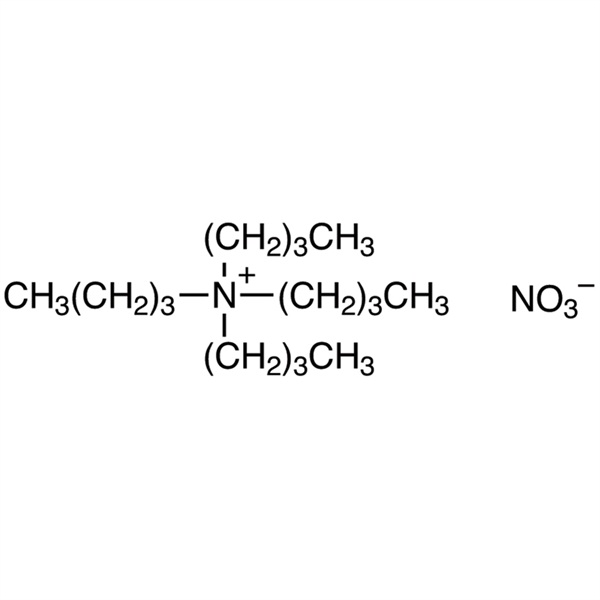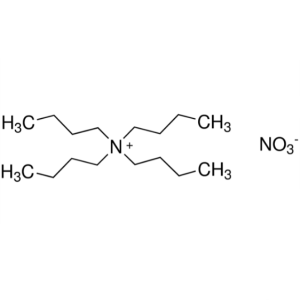Tetrabutylammonium Nitrate (TBAN) CAS 1941-27-1 Purity >98.0% (Titration)
Shanghai Ruifu Chemical Co., Ltd. is the leading manufacturer of Tetrabutylammonium Nitrate (TBAN) (CAS: 1941-27-1) with high quality. Ruifu Chemical can provide worldwide delivery, competitive price, excellent service, small and bulk quantities available. Purchase Tetrabutylammonium Nitrate, Please contact: alvin@ruifuchem.com
| Chemical Name | Tetrabutylammonium Nitrate |
| Synonyms | TBAN; Tetra-n-Butylammonium Nitrate; N,N,N-Tributyl-1-Butanaminium Nitrate |
| Stock Status | In Stock, Commercial Production |
| CAS Number | 1941-27-1 |
| Molecular Formula | C16H36N2O3 |
| Molecular Weight | 304.48 g/mol |
| Melting Point | 117.0 to 121.0℃ |
| Sensitive | Hygroscopic |
| Water Solubility | Soluble in Water |
| Stability | Stable. Combustible. Incompatible with strong oxidizing agents. Hygroscopic - protect from moisture. |
| COA & MSDS | Available |
| Sample | Available |
| Origin | Shanghai, China |
| Brand | Ruifu Chemical |
| Items | Specifications | Results |
| Appearance | White Solid | White Solid |
| Melting Point | 117.0 to 121.0℃ | 118.0 to 119.0℃ |
| Water by Karl Fischer | <0.50% | 0.05% |
| Purity / Analysis Method | >98.0% (Titration) | 98.16% |
| Potassium (K) | <25ppm | <25ppm |
| Infrared Spectrum | Consistent with Structure | Complies |
| 1H NMR Spectrum | Consistent with Structure | Complies |
| Conclusion | The product has been tested and complies with the given specifications | |
Package: Bottle, Aluminium foil bag, 25kg/Cardboard Drum, or according to customer's requirement.
Storage Condition: Hygroscopic. Keep the container tightly closed, store in a cool, dry, well-ventilated warehouse away from incompatible substances. Protect from light and moisture. Incompatible with strong oxidizing agents.
Shipping: Deliver to worldwide by air, by FedEx / DHL Express. Provide fast and reliable delivery.
How to Purchase? Please contact Dr. Alvin Huang: sales@ruifuchem.com or alvin@ruifuchem.com
15 Years Experience? We have more than 15 years of experience in the manufacture and export of a wide range of high quality pharmaceutical intermediates or fine chemicals.
Main Markets? Sell to domestic market, North America, Europe, India, Korea, Japanese, Australia, etc.
Advantages? Superior quality, affordable price, professional services and technical support, fast delivery.
Quality Assurance? Strict quality control system. Professional equipment for analysis include NMR, LC-MS, GC, HPLC, ICP-MS, UV, IR, OR, K.F, ROI, LOD, MP, Clarity, Solubility, Microbial limit test, etc.
Samples? Most products provide free samples for quality evaluation, shipping cost should be paid by customers.
Factory Audit? Factory audit welcome. Please make an appointment in advance.
MOQ? No MOQ. Small order is acceptable.
Delivery Time? If within stock, three days delivery guaranteed.
Transportation? By Express (FedEx, DHL), by Air, by Sea.
Documents? After sales service: COA, MOA, ROS, MSDS, etc. can be provided.
Custom Synthesis? Can provide custom synthesis services to best fit your research needs.
Payment Terms? Proforma invoice will be sent first after confirmation of order, enclosed our bank information. Payment by T/T (Telex Transfer), PayPal, Western Union, etc.
Risk Codes R8 - Contact with combustible material may cause fire
R36/37/38 - Irritating to eyes, respiratory system and skin.
R9 - Explosive when mixed with combustible material
Safety Description S17 - Keep away from combustible material.
S26 - In case of contact with eyes, rinse immediately with plenty of water and seek medical advice.
S37/39 - Wear suitable gloves and eye/face protection
UN IDs UN 1479 5.1/PG 2
WGK Germany 3
RTECS BS5475000
TSCA Yes
HS Code 2923900090
Hazard Class 5.1
Packing Group III
Tetrabutylammonium Nitrate (CAS: 1941-27-1) is used in coatings, printing ink, rubber, glass, leather and cosmetics. It serves as a supporting electrolyte in liquid ammonia. It is also used in the preparation of nitrates from triflates. It is employed in the inversion of configuration of alcohols through tosylates. It is also a source of NO3- used in nucleophilic substitution reactions. Further, it is used in the conversion of halides into ketones. In addition to this, it is used as a source of nitronium ions for the nitration of olefins, amides, ribonucleosides, glycols and aromatic compounds.
-
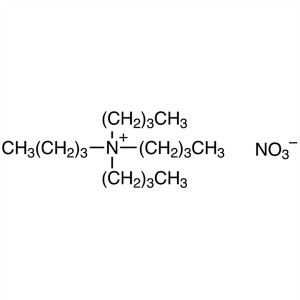
Tetrabutylammonium Nitrate (TBAN) CAS 1941-27-1...
-
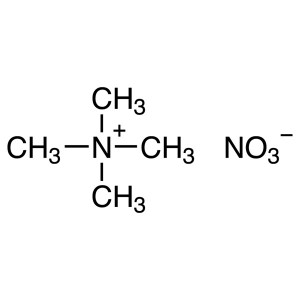
Tetramethylammonium Nitrate CAS 1941-24-8 Purit...
-
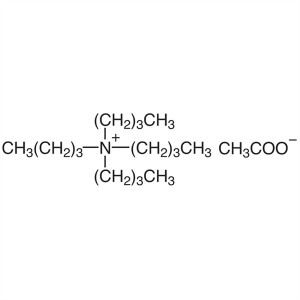
Tetrabutylammonium Acetate (TBAA) CAS 10534-59-...
-
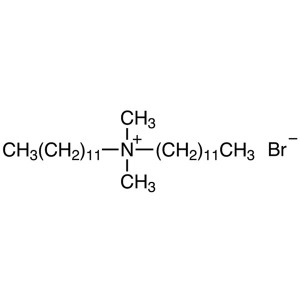
Didodecyldimethylammonium Bromide CAS 3282-73-3...
-
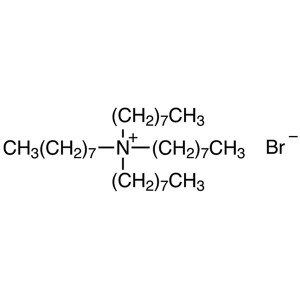
Tetra-n-Octylammonium Bromide (TOAB) CAS 14866-...
-
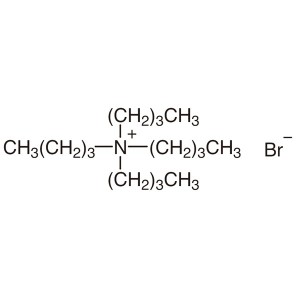
Tetrabutylammonium Bromide (TBAB) CAS 1643-19-2...
-
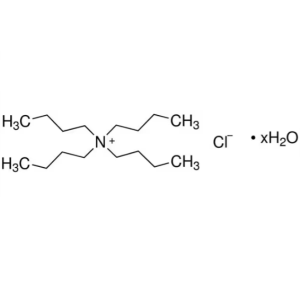
Tetrabutylammonium Chloride Hydrate CAS 37451-6...
-
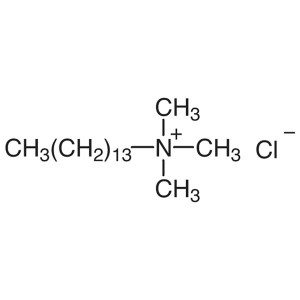
Trimethyltetradecylammonium Chloride CAS 4574-0...
-
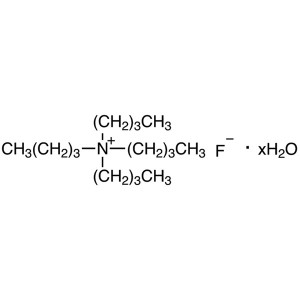
Tetrabutylammonium Fluoride Hydrate (TBAF Hydra...
-
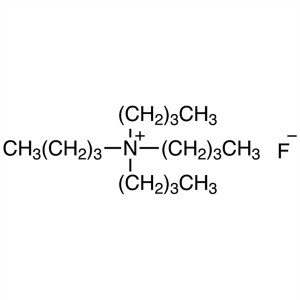
Tetrabutylammonium Fluoride Solution (TBAF) CAS...
-
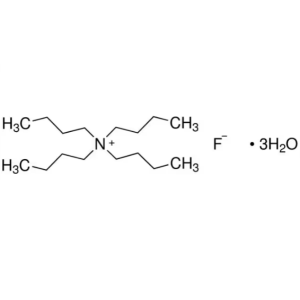
Tetrabutylammonium Fluoride Trihydrate CAS 8774...
-
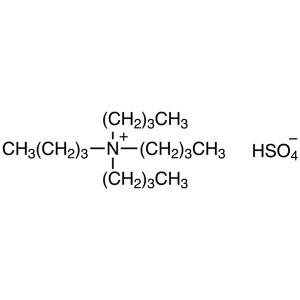
Tetrabutylammonium Hydrogen Sulfate (TBAHS) CAS...
-
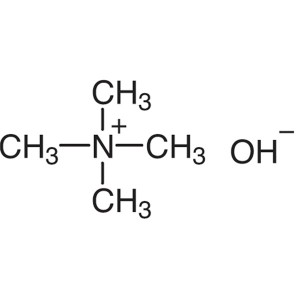
Tetramethylammonium Hydroxide (TMAH) CAS 75-59-...
-
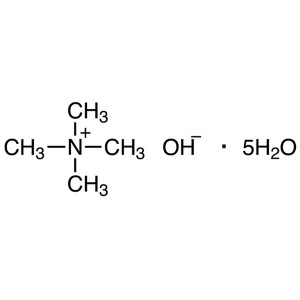
Tetramethylammonium Hydroxide Pentahydrate CAS ...
-
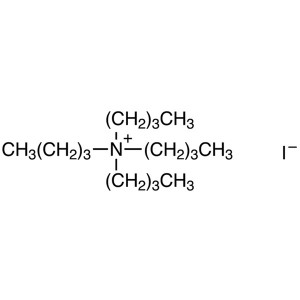
Tetrabutylammonium Iodide (TBAI) CAS 311-28-4 P...
-
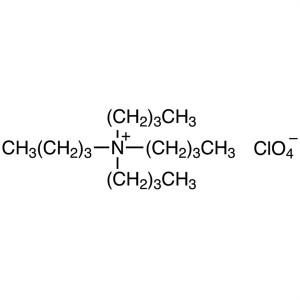
Tetrabutylammonium Perchlorate (TBAP) CAS 1923-...

